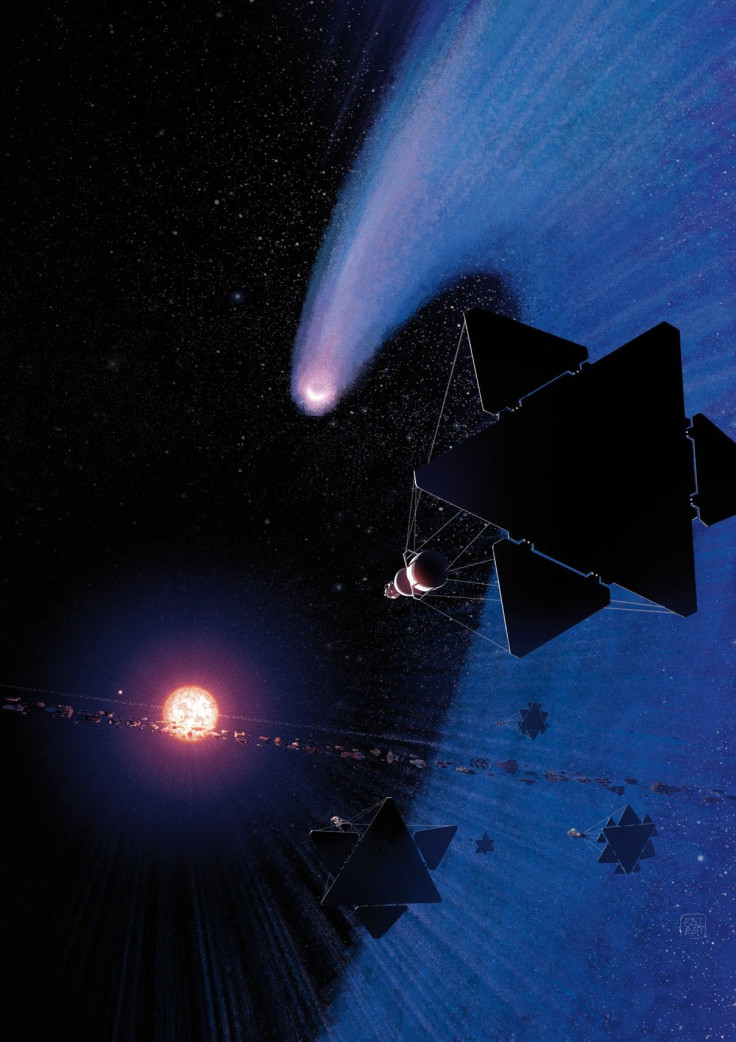Comet-Like Exoplanet Evaporates, Orbits Its Star’s Poles And Could Have Mysterious Companion

Unlike the more or less orderly system of the eight planets of our solar system — planets following mostly circular orbits that are almost in the same plane as the equator of the sun — it turns out some systems are comparatively very chaotic. And even among those, exoplanet GJ436b seems to stand out as rather exceptional.
First discovered in 2004, GJ436b (also called Gliese 436b) is a Neptune-mass exoplanet, and is classified as a warm Neptune or hot Neptune.
Located just over 33 light-years away from Earth, it is estimated to have a surface temperature of about 712 Kelvin (822 degrees Fahrenheit) and a 2015 paper in the journal Nature discussed a comet-like tail to the planet, composed mainly of hydrogen atoms, through which the planet’s atmosphere was evaporating.
One of the reasons a planet could be doing that is because of an unusual orbit around its parent star, a fact that another paper published this week in the same journal confirms.
An international team of researchers, led by scientists from the University of Geneva, Switzerland, found that unlike most planets, which orbit in the equatorial plane of their host stars, GJ436b has a polar orbit, which is to say, it orbits over the poles of its star, which is a red dwarf called GJ436. This orbit is also very far from being circular, and instead, is a tight elliptical one, and therefore, the planet-star distance varies greatly during the planet’s orbit — which takes about two days and 15 hours of Earth time.
Along with the lack of a circular orbit, a highly inclined orbit of the exoplanet was predicted by calculations, and both those aspects were confirmed by measurements.
“This planet is under enormous tidal forces because it is incredibly close to its star, barely 3 percent of the Earth-Sun distance. The star is a red dwarf whose lifespan is very long, the tidal forces it induces should have since circularized the orbit of the planet, but this is not the case!” Vincent Bourrier from the university and first author of the new study explained in a statement Monday.
That could be because there is likely another massive planet, as yet undiscovered, nearby that has affected the movement of GJ436b. The warm Neptune wasn’t necessarily always so close to its parent star, and at a larger distance, it probably wasn’t evaporating any material from its atmosphere either. But the gravitational tug and push of another nearby star could have altered its orbit, bringing it closer inside the stellar system and giving it its unusual orbit.
“Our next goal is to identify the mysterious planet that has upset this planetary system,” Bourrier said in the statement.
© Copyright IBTimes 2024. All rights reserved.





















